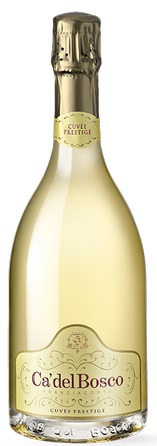|
|
 |
|
December 24, 2021
Note: 2021 has been--at best--a challenging year for everyone, and those of us with Wine Review Online are no exceptions. We lost our dear friends Robert Whitley and Paul Lukacs, but we haven't lost our sense of what they'd tell us to do, which is to pop a cork in remembrance of them, and with hopes for a better year ahead. Here's a bubbly blog written by Robert not long ago, which may help you prepare for your own pop in remembrance and hope. ~MF
* * *
Admit it, you're one of those wine lovers who only thinks about bubbly between Thanksgiving and New Year's Eve. And if you're not, you certainly crave the fizz more around the holidays. At least that's what the numbers indicate. The bulk of U.S. sparkling wine sales come in the final two months of the year — every year.
So, a refresher course in the world of sparkling wine may be in order.
First, you might have noticed that I've used the terms bubbly, fizz and sparkling wine, not Champagne. It is all too easy — and lazy, the Champenoise would say — to lump all sparkling wine under the Champagne umbrella. Wrongheaded, too.
 Champagne is the pinnacle of sparkling wine, thus the very real urge to piggyback its history and prestige. In fact, Champagne is a legally defined region about an hour northeast of Paris, and its vignerons don't take kindly to the adoption of Champagne as a generic term to describe Cava or Prosecco or any of the myriad other sparkling wines from throughout the world.
I will be the first to concede that Champagne deserves its lofty perch atop the world of sparkling wine. A number of factors contribute to this. First, the chalky soils of the region impart a structure and vital minerality found in Champagne that is difficult to replicate anywhere else on the planet. A carefully cultivated hierarchy of vineyards (grand cru, premier cru, etc.) is another factor.
In the cellar, "reserve" wines from exceptional vintages are culled out and saved for multi-vintage blends that ensure a top Champagne house can maintain quality even through less-than-stellar vintages. And the top wines of Champagne are aged extensively on the lees, building complexity with each passing year. The lengthy aging contributes mightily to the high cost of special cuvée Champagnes.
Is the added expense of serving Champagne as opposed to another sparkling wine worth it? That's up to the individual. The important thing to remember is this: If someone offers you a glass of Dom Perignon or Roederer Cristal, don't turn it down. It will surely be a unique and memorable experience. I can't even imagine another adult beverage more appropriate for a celebratory toast.
The list of Champagnes worthy of the higher prices is long, so I will contain myself with a handful of personal favorites: Bruno Paillard, Laurent-Perrier, Möet & Chandon, Dom Perignon, Roederer, Taittinger, A.R. Lenoble, Charles Heidsieck, Piper-Heidsieck, Henriot and Delamotte. I could go on, but these Champagnes should set you up nicely for any and all special occasions.
 Beyond Champagne, there are notable sparkling wines that have made tremendous strides over the past few decades and enjoy favorable comparisons with Champagne, specifically north central Italy, and the Napa and Sonoma regions of California. The top wines from these areas are still quite expensive, but prices pale next to the finest Champagnes.
Italy's Franciacorta and Trento regions produce remarkable sparkling wine using the tried and true methods of Champagne, i.e. a second fermentation in the bottle and extensive aging on the lees. Ca' del Bosco, Bellavista and Ferrari all produce world-class bubbly that could fool a Champagne aficionado in a blind tasting.
Ditto the likes of Domaine Carneros by Taittinger, Roederer Estate, Domaine Chandon, Schramsberg Vineyards, Mumm Napa Valley, J Vineyards and Iron Horse from California. The primary differences to my palate are a more intense aroma of toasty brioche and a stronger thread of minerality that I find in Champagne. That said, the finest sparkling wines from California and northern Italy are stunning in their own right.
Another rung down the price ladder you will find Cava, Prosecco and the various Cremant expressions of France, such as Crémant d'Alsace, Crémant de Loire and Crémant de Bourgogne. These wines, with some exceptions, are not as complex or profound as Champagne and the top northern Italian and California sparklers, but they are delicious and easy on the budget, and so, not to be easily dismissed.
Many of these wines are made using the Charmat Method, where the wine undergoes fermentation in large stainless steel tanks, rather than individual bottles. This more economical production method results in lower prices, which may better fit your party budget.
The one complaint I hear frequently about Prosecco is that it is sweet, and there is some truth to that. A huge percentage of Prosecco production is in the extra-dry category, which can be noticeably sweeter than a Brut sparkler. These wines can be very tasty, but if you prefer a drier style, it is best to seek out Prosecco specifically labeled as Brut.
Of course, sparkling wines are also made in such far-flung places as Australia, New Zealand, Chile, Argentina and South Africa, and quality in general is very high, making these quite enjoyable options for experimentation….
Happy Holidays from everyone at WineReviewOnline.com
|
|
 |
|